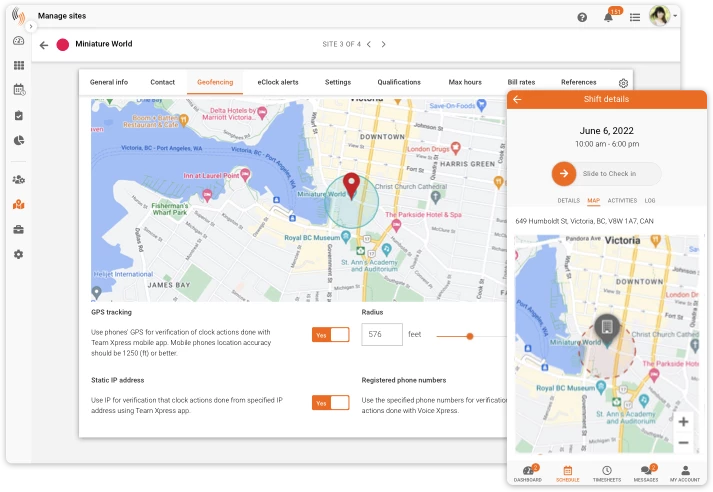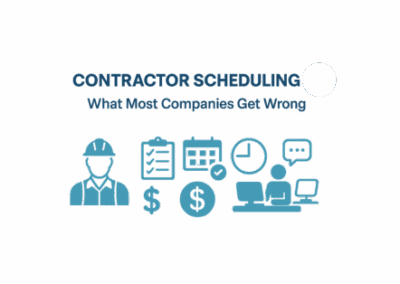California’s labour laws are known for being employee-friendly, and one aspect where this is particularly evident is in meal and rest break requirements. These laws, more generous than federal labour regulations, are designed to ensure that employees receive the necessary breaks during their workday to relax and recharge. In this comprehensive blog post, we will delve into California meal break law, discuss the importance of breaks for employees, and introduce Celayix’s Meal Break Tracking feature—a tool that can help businesses ensure compliance with these vital regulations.

California Meal Break Law: Understanding the Basics
Under California meal break law, non-exempt employees are entitled to a 30-minute uninterrupted, duty-free meal break if they work more than 5 hours in a workday. Additionally, they are entitled to a 10-minute uninterrupted, duty-free rest break for every 4 hours of work or a “major fraction” thereof.
Suppose an employer fails to comply with these break requirements. In that case, they are obligated to pay the employee one extra hour of regular pay each day a meal break violation occurs and another extra hour for each day a rest break violation occurs.
Let’s break down the meal and rest break requirements further:
Meal Break Law Chart
| Hours on the Clock | Meal Breaks |
|---|---|
| 0 to 5 hours | 0 |
| 5 hours to 10 hours | 1 |
| 10 hours to 15 hours | 2 |
| 15 hours to 20 hours | 3 |
| 20 hours and more | 4 |
Meal Break Law Requirements
- Employees who work over 5 hours a day are entitled to a meal break of at least 30 minutes, which must start before the end of the fifth hour of their shift.
- Employees can agree with their employer to waive this meal period if they do not work more than 6 hours in a workday. Alternatively, they can decide to take an on-duty meal break, which counts as time worked and is paid.
- Employees who work over 10 hours a day are entitled to a second meal break of at least 30 minutes, which must start before the end of the tenth hour of their shift. However, the second meal break can be waived if the employee does not work more than 12 hours and does not waive their first meal break.
- Employees must be allowed to take their meal break off work premises and spend it as they wish, as it is considered off the clock.
- Employers cannot require employees to work during any needed meal break.
Rest Break Law Chart
| Hours on the Clock | Rest Breaks |
|---|---|
| 0 to 3.5 hours | 0 |
| 3.5 hours to 6 hours | 1 |
| 6 hours to 10 hours | 2 |
| 10 hours to 14 hours | 3 |
| 14 hours to 18 hours | 4 |
| 18 hours to 22 hours | 5 |
Rest Break Law Requirements
- Employers must provide a rest break of at least 10 uninterrupted minutes.
- Employers must pay for rest breaks.
- Employees who work at least 3.5 hours a day are eligible for one rest break. If they work over 6 hours, they qualify for a second rest break. Shifts exceeding 10 hours necessitate a third rest break.
- Rest breaks should ideally be during each work period, especially for an 8-hour shift.
- Employers cannot require employees to remain on work premises during their rest breaks.
- Employees cannot be forced to work during their mandatory rest breaks.
While these regulations aim to safeguard employees, numerous exceptions apply to specific industries. These exceptions pertain to sectors like construction, healthcare, group homes, motion pictures, manufacturing, and baking. Now, let’s explore some crucial meal and rest breaks aspects.
Can Employees Skip or Waive Their Breaks?
Employers must make timely meal and rest breaks available to employees, but they are not obligated to compel employees to take them. The decision to skip or waive breaks is up to the employee. However, employers have the right to set work schedules, including break schedules. If an employer orders an employee to take a break and the employee does not comply, the employer can discipline or terminate the employee for insubordination. Therefore, discussing any intention to skip or waive breaks with your employer is advisable.
Suing Your Employer for Violating California Meal Break and Rest Break Law
Employees have the right to sue their employers for violating meal break and rest break laws. The penalties can be significant if an employer denies an employee these breaks. An employee is entitled to receive a penalty of 1 hour of wages for each day they were denied any rest breaks. Additionally, they can receive an extra penalty of 1 hour for each day they were denied any meal breaks, with a maximum penalty of up to 2 hours per day. These claims are subject to strict filing deadlines, usually considered 3 years for meal and rest break violations.
Exempt Salaried Workers and Breaks
Exempt salaried workers, including supervisors, may still have rights to meal and rest breaks, depending on their specific job roles and industry. While some exemptions exist under California labour laws, certain exempt employees are still entitled to these breaks. It’s essential to consult with a lawyer to determine if your situation qualifies for breaks.
In addition to the existing California meal break laws, it’s worth reminding that the California Supreme Court issued a ruling requiring rest and meal period premiums to include non-discretionary payments, such as bonuses and other incentive payments, in addition to the employee’s base hourly rate. This underscores the critical importance of accurate timekeeping and compliance with meal break laws.
Penalties for Meal and Rest Break Violations
California law penalizes employers who fail to provide proper meal and rest breaks. For each workday an employer fails to provide a meal break, they owe the employee an additional hourly pay at the regular rate. Similarly, the employer owes the employee one hour of pay at the regular rate for missed rest breaks. If an employer violates both meal and rest breaks in one day, the penalty can amount to two hours of pay for the employee.
Celayix’s Meal Break Tracking Feature: Ensuring Compliance
Now that we’ve explored California’s meal and rest break laws in-depth let’s focus on Celayix’s Meal Break Tracking feature. This innovative tool can assist businesses in complying with these crucial regulations while providing valuable benefits to employers and employees.
Understanding Celayix’s Meal Break Tracking Feature
Celayix offers an advanced Time & Attendance module, including the Meal Breaks module. To utilize this feature, you must have licenses for the eTime Xpress, eClock (Voice Xpress and/or Team Xpress), and Meal Breaks modules. Here’s how it works:
Logging Meal Breaks
Employees can record their meal breaks using either Team Xpress, Voice Xpress, eClock, or a combination of these methods. The system allows for a minimum break duration, preventing employees from recording too short breaks. It guides employees on how long they must wait before recording the end of their break.
The system ensures that break entries follow the prescribed sequence: check-in before break starts and break start before break ends. Employees can record multiple break start/end sequences if needed. If the shift’s scheduled break length exceeds the legal requirement, the system will still enforce compliance with the statutory minimums. This ensures employees receive at least the minimum meal and rest breaks under California law.
Supervisor Validation
Supervisors have the ability to review and validate employee meal break entries. They can verify that meal breaks were taken within the legal timeframes and that employees received the required duration of breaks. This validation process helps ensure that your organization complies with labour laws. Moreover, it minimizes the risk of penalties for meal and rest break violations.
Detailed Reporting

Celayix’s Meal Break Tracking feature includes reporting capabilities that provide valuable insights into employee break patterns and compliance. Employers can generate reports to see which employees have taken their breaks correctly and which may need additional guidance or training on break compliance. This data can be crucial in addressing compliance issues proactively and ensuring that all employees receive their legally mandated breaks.
Benefits of Using Celayix’s Meal Break Tracking Feature
Compliance Assurance:
By using Celayix’s Meal Break Tracking feature, employers can confidently ensure their employees receive the required meal and rest breaks, reducing the risk of legal violations and associated penalties.
Time and Cost Savings:
The automated tracking and reporting capabilities of Celayix save time for employees and supervisors. This efficiency can translate into cost savings for businesses.
Improved Employee Experience:
Ensuring employees get their mandated breaks enhances the work environment. Employees who receive adequate rest breaks are likely to be more productive, less fatigued, and generally more satisfied with their jobs. Celayix does not impose a maximum meal break time setting, placing employees responsible for confirming when they’ve taken their breaks. This approach empowers employees to play an active role in ensuring they meet their legal obligations. It also simplifies the tracking process and reduces the administrative burden on employers.
Legal Protection:
In the event of a dispute or lawsuit related to meal and rest breaks, having a robust tracking system like Celayix’s can provide valuable evidence of compliance, protecting the employer from legal liabilities. The primary motivation behind implementing the Meal Break Tracking feature is to protect employers from costly legal consequences. As noted earlier, California’s meal break laws are stringent, and employers are legally bound to ensure their employees receive the mandated breaks. Failure to comply can result in significant financial penalties. Celayix’s feature acts as a safety net, providing concrete evidence of compliance. This invaluable data can save employers from legal liabilities and disputes.
Customization:
Celayix’s system is customizable to fit your organization’s specific needs and break policies. You can tailor the system to your specific situation, whether you have unique scheduling requirements or industry-specific regulations. For instance, Celayix goes the extra mile by giving employers control over various aspects of meal break tracking. You can edit settings related to the minimum meal break time and whether employees are required to take a break. This means that the app will allow employees to check out once they confirm that they’ve taken their mandatory break. Schedulers have the ability to establish these rules, providing a tailored approach that aligns with your organization’s specific needs.
Tailored to Employee Groups:
It’s essential to recognize that not all employees require the same level of meal break tracking. Celayix understands this, and its flexibility allows employers to turn off the feature for specific employee groups. For instance, managers and other salaried workers may not need meal break tracking, and Celayix enables you to customize this feature accordingly. This tailored approach ensures that your workforce’s needs are met without unnecessary administrative overhead.
Celayix Affirm Shifts Feature
Affirmations for Compliance:
To ensure that meal breaks are not only scheduled but also confirmed, Celayix provides an affirmation feature. This feature has two independent components: “Slide to Break” and “Do Affirmations.” Schedulers have two options to obtain confirmations of meal breaks. They can schedule breaks for employees; in this case, employees will be aware of their scheduled break times. Employers can also create rules specifying whether the scheduled break must be an actual break or if the employee can take it outside the scheduled time. Documentation is maintained in both scenarios, confirming that meal breaks were taken and all rules followed.
Affirmation Alerts:
Celayix’s Meal Break Tracking feature eliminates the need for an alert system. Instead, schedulers can activate the affirmation feature, which prevents employees from checking out until they’ve confirmed they’ve taken their meal break. The scheduler can enable this setting under “Branch Features” in the shift options or “Shift Task Lists” within the settings. It ensures employees affirm their compliance with California’s meal break laws, leaving no room for doubt or oversight.
Celayix Check-in/Check-out Feature
California’s labour laws, especially those pertaining to meal breaks, aim to protect the rights and well-being of employees. Employers have a legal obligation to ensure that their employees receive the required meal breaks based on the hours worked. Implementing the check-in and check-out options within the Celayix Team Xpress App is not just a matter of convenience but also a strategic move towards compliance and employee satisfaction.
Accurate Recordkeeping:
The core of California’s meal break laws revolves around accurately tracking an employee’s work hours. This includes starting and ending times for shifts. With the check-in feature, the Team Xpress App records the exact moment when an employee begins work. This timestamp is invaluable for determining when meal breaks should be scheduled.

Timing of Meal Breaks:
According to California labour laws, an employee becomes eligible for a meal break after working five hours. The check-in time serves as the starting point for calculating when the meal break should occur. Employers can use this data to ensure that meal breaks are scheduled in compliance with the law.
Duration of Meal Breaks:
California mandates that meal breaks must be at least 30 minutes long. Employees can use the Team Xpress App to record their meal breaks’ start and end times. This feature directly addresses the requirement for meal break duration, allowing employers to document compliance with this aspect of the law.
Validation and Compliance:
Supervisors may review employee meal break entries using the Team Xpress App. This validation process helps ensure that employees take their meal breaks within the specified timeframes and are of the required duration. It serves as a proactive step in ensuring compliance.
Geofencing for Off-Premises Breaks:
In cases where employees take their meal breaks off-site, geofencing becomes essential. It ensures that employees have the opportunity to leave the workplace, as required by California law. This feature helps employers demonstrate that meal breaks are truly uninterrupted and off-duty.
Legal Protection:
The data captured through the Team Xpress App serves as crucial evidence of compliance. In the event of disputes or legal claims related to meal break violations, it can be used to demonstrate that employers have met their obligations under California labour laws. This legal protection can save employers from costly penalties and legal liabilities.
Conclusion: What to Expect from California Meal Break Law
California has designed meal and rest break laws to protect the rights of employees, ensuring that they have adequate time to rest and recharge during their workday. Employers have a legal obligation to provide these breaks, which can result in significant financial penalties.
To navigate these regulations successfully and ensure compliance, businesses can leverage technology solutions like Celayix’s Meal Break Tracking feature. Employers can streamline compliance efforts and protect their organizations from potential legal issues by automating break tracking, validating entries, and generating comprehensive reports.
Ultimately, prioritizing meal and rest breaks is a legal requirement and a way to foster a healthier and more productive workplace. When employees have the opportunity to take the breaks they need, they are more likely to perform at their best, leading to improved overall business performance. Celayix’s Meal Break Tracking feature is just one example of how technology can help businesses meet their legal obligations while benefiting their workforce and operations.
In conclusion, compliance with meal and rest break laws is a legal necessity and a strategic advantage for employers looking to create a positive and productive work environment. By understanding these regulations and utilizing tools like Celayix’s Meal Break Tracking feature, businesses can ensure that they meet their obligations and provide employees with the breaks they need to thrive.




